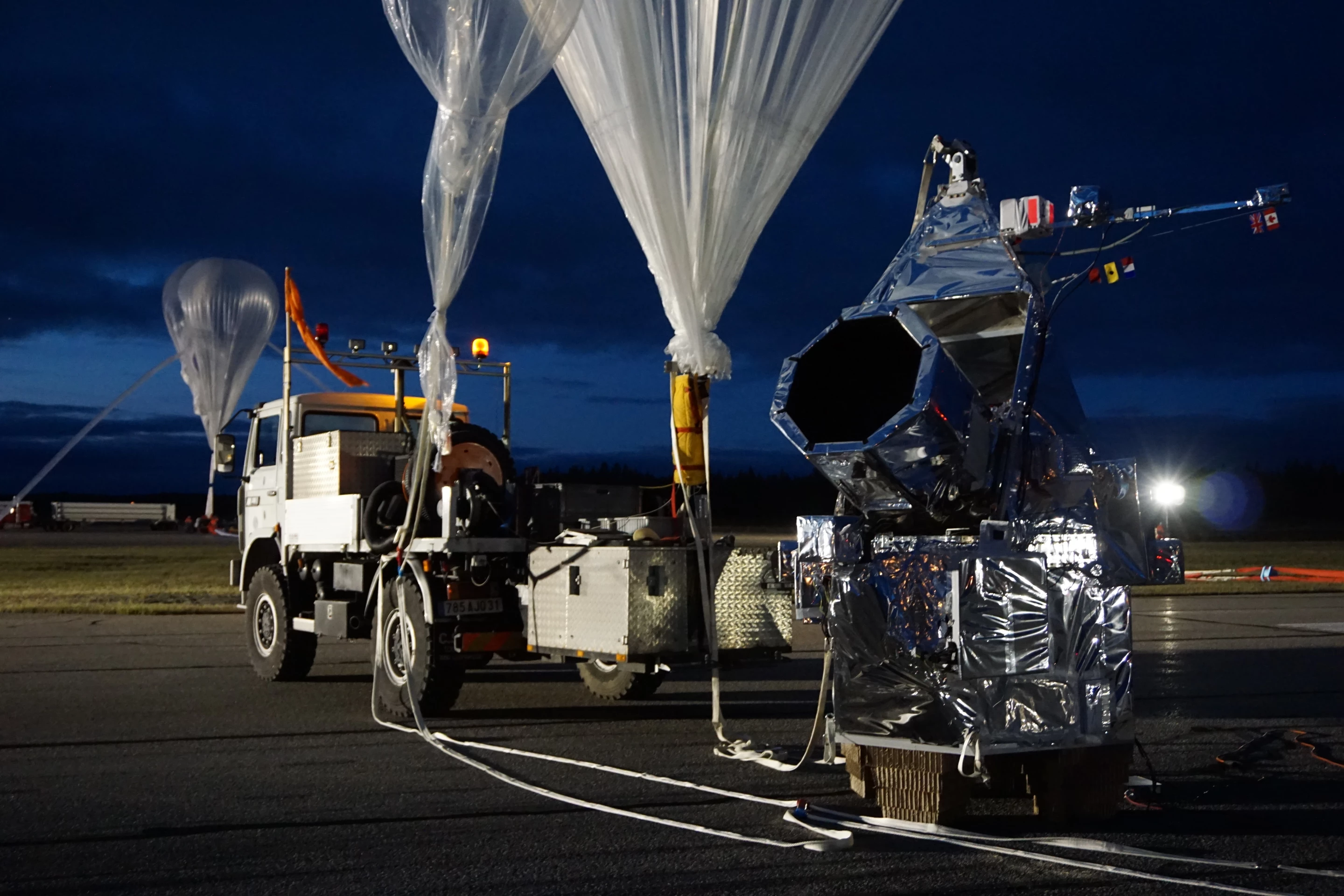While the Hubble Space Telescope has provided us with a wealth of data, getting it into orbit and servicing it have proven to be very expensive. The SuperBIT telescope is an intriguing alternative, as it hangs beneath a balloon instead of being launched by a fuel-hungry rocket.
Its name an acronym for Superpressure Balloon-borne Imaging Telescope, SuperBIT is being developed via a collaboration between the University of Toronto, Princeton University, Britain's Durham University, NASA and the Canadian Space Agency. With a budget of US$5 million for its construction and operation, it is claimed to cost about one one-thousandth as much as a similarly equipped satellite.
The telescope itself incorporates a 0.5-meter-diameter mirror, and is tethered to a "football-stadium-sized" helium-filled balloon with a volume of 532,000 cubic meters (18,787,403 cu ft). That balloon lifts SuperBIT to an altitude of about 40 km (25 miles) above sea level, where it sits above approximately 99.5 percent of Earth's atmosphere. This allows it to obtain sharp, stable images of celestial bodies, which would be distorted by atmospheric turbulence if observed from the ground.
And while conventional weather balloons can typically only stay aloft for several days before their helium dissipates, SuperBIT's "superpressure" balloon contains its helium for months. This means the telescope should be able to remain at altitude for that amount of time, shooting photos at night and using its solar panels to recharge its batteries during daylight hours.
"It's the same sort of quality that you'd get from a space telescope of that size, but it's significantly cheaper," University of Toronto doctoral candidate Mohamed Shaaban tells us. "The reduction in cost makes it significantly more accessible."

In order to guard against its recorded data being lost in an unsuccessful landing or other mishap, SuperBIT will periodically eject GPS-traceable hard drives of data that will parachute to the ground throughout the course of each mission. The drops will not be made over the ocean, where the drives would just sink.
Once its mission is complete, the balloon will be burst, and the telescope will parachute back to Earth. All of its data can then be retrieved, and any required upgrades or repairs can be made before its next launch.
By contrast, servicing the Hubble telescope typically involves sending astronauts out to it. In order to keep those trips to a minimum, such space telescopes incorporate failsafes such as redundancy systems, greatly adding to their cost. What's more, while the design of SuperBIT has been rapidly refined and perfected via numerous test flights, space telescopes have to be near a state of perfection before their initial launch – meaning they take a lot longer to design.
"The fact that we have these test flights means that the development time scale – from the day you start to the day you finish – is significantly shorter," says Shaaban. "This contributes to reductions in costs, but more interestingly, it means you can keep up with the state of the art in technology."
After having successfully completed four such test flights (the most recent of which was in 2019), SuperBIT has now been scheduled to begin its first official mission next April. After being equipped with a larger 1.5-m mirror (the Hubble has a 2.4-m mirror, for reference) along with a wider-angle lens and a larger image sensor, it will be launched from a site at Wanaka, New Zealand.

Plans call for it to then circumnavigate the Earth several times, carried by reasonably predictable seasonal winds. As it does so, it will utilize a technique known as gravitational lensing to investigate the properties of dark matter.
And no, SuperBIT is not the world's only balloon-borne telescope. The GRIPS telescope has already been used to study solar flares, while NASA's ASTHROS is due to launch in December 2023.
Source: Royal Astronomical Society







